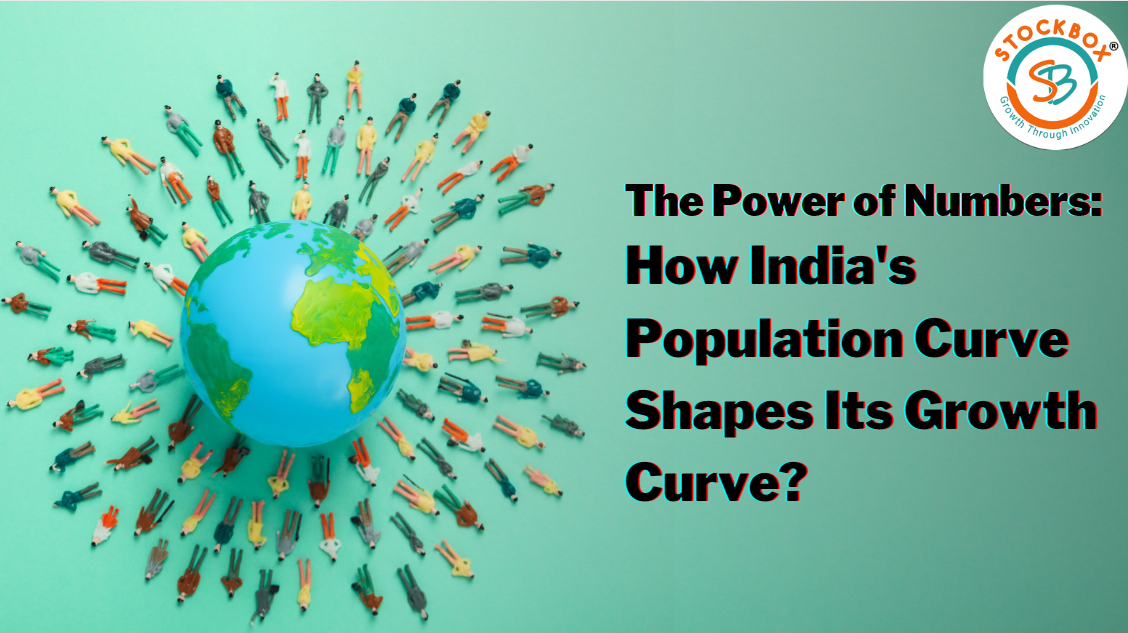India, the most populous country in the world, has long mesmerized nations worldwide with its colourful culture, extensive history, and tremendous growth potential. In our hustling country, the link between the population curve and the growth curve is an intriguing topic that reveals the complex dynamics of an economy in transition. In order to shed light on how both of these factors affect India’s course towards prosperity, we set out on an interesting essay to investigate the interaction between these two complicated subjects.
Dilemma of increasing population:
As per United Nation’s report in April 2023, India is expected to surpass China in terms of population by the middle of this year. Some see this as a problem and worry about the stress that it will put on the resources and infrastructure. However, a closer inspection shows a different viewpoint—a plentiful supply of human capital that may be used as a spur for economic expansion. With an average age of about 28 years, India’s young population offers a chance to develop an efficient workforce that will encourage innovative thinking, entrepreneurship, and consumption.
Strong and growing consumer market:
India’s population curve directly impacts its growth curve via influencing the country’s consumer base. India offers an alluring possibility for both local and foreign enterprises owing to its sizable and expanding middle class, which is driven by rising earnings and expectations. A positive cycle of economic expansion is fostered by the rise of consumer appetite for products and services, which opens up doors for job creation, entrepreneurial activity, and investments. As more people join the workforce, income levels increase, allowing for higher spending and advancing the economy.
Investment in Human resource:
India’s rising population curve has the potential to alter the nation’s economic trajectory if it is combined with wise expenditures in medical care, higher learning, and skill acquisition. India can develop a highly trained workforce that’s capable of fostering inventiveness, technological progress, and productivity improvements by providing its population with the requisite information and expertise. A population that is educated and in sound health creates an environment that is conducive to innovation, luring international funding and developing a competitive advantage in the international marketplace.
Infrastructure development and urbanization:
Due to increasing population, numerous millions of individual move to metropolitan cities in quest of better prospects. This change necessitates significant expenditures in infrastructure, real estate, public transit, and other such facilities. Rapid urbanization may provide demand-driven economic growth, opening doors for the real estate and associated sectors. Additionally, the creation of smart cities has the potential to improve productivity, long-term sustainability, and overall standard of life while also boosting economic growth.
Balancing the challenges and opportunities of upward trending population curve:
The upward-trending population curve has enormous expectations, but it also offers difficulties that must be carefully navigated. Maintaining equal accessibility for all individuals to fundamental necessities like medical care, educational opportunities, and amenities is a top concern. In addition, it’s essential to attend to the job prospects, social security, and sustainability-related concerns of a growing population. These difficulties may be turned into possibilities for sustained growth with an aggressive plan that consists of inclusive policies, focused interventions, and creative solutions.
Bottom-line:
India’s development and population curves are interconnected in a riveting ballet, one impacting the other in a delicate but interesting way. The country has the chance to use its expanding population to spur economic expansion, creative thinking, and progress rather than viewing it as a daunting challenge. India can unlock the untapped potential of its population and start along the path to development by making investments in human resources, embracing urbanization, and adopting equitable policies, setting a bright example for other developing countries all through the entire globe.

